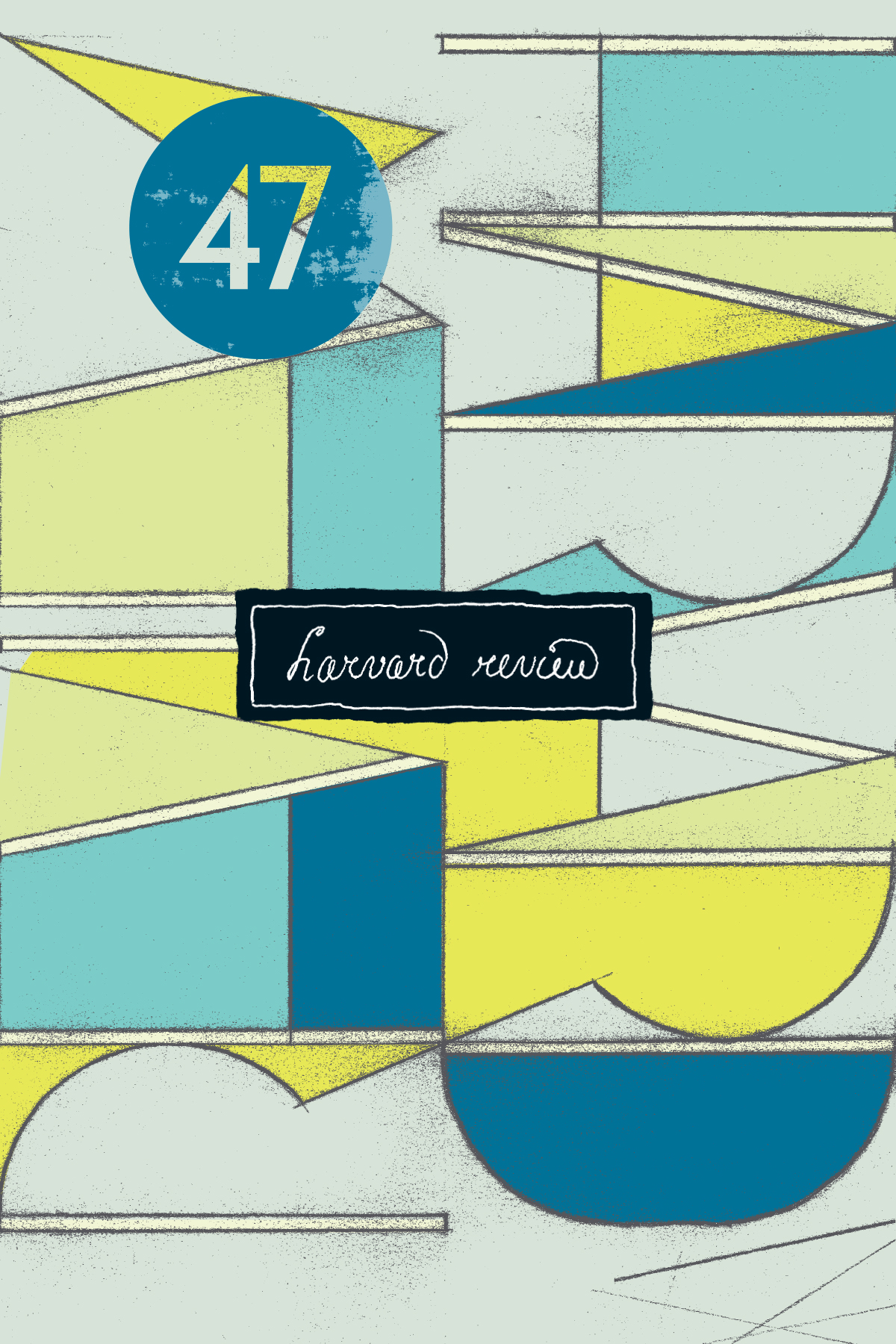HR 47 Editorial
by Christina Thompson
Harvard Review has attended a number of conferences and festivals this year, which has given me a chance to listen to some of my colleagues try to answer a question that always comes up: What are you looking for in a piece of writing? One reason this question continues to get asked is that the answers editors give are almost always impossible to translate into any kind of action a writer can take.
Editors can tell writers how to format their work for submission, or what to leave out of a cover letter, or how long they should expect to wait for a reply. But it is difficult for them to say in the abstract what it is about a piece of writing that makes them want to publish it. Still, most editors will give it a try, and while what they say may not be actionable, it usually reveals something about the editor’s—and therefore the journal’s—sensibility.
I was interested, for example, to hear Jennifer Barber, the editor of Salamander, say at an editors’ roundtable in Cambridge this year that her journal was open to work that was powerful in a quiet sort of way. This is a feeling I share, but “quiet” is a funny word in literary publishing—one rarely sees it used in a commendatory way. In fact, “too quiet” is frequently tossed in the face of aspiring writers by agents and editors who consider it an especially damning description of debut fiction.
I like quiet; I also like smart, and literary, and funny. But a quality that almost all editors appreciate is surprising. This is not the same as shocking—a mistake many writers make—it has almost nothing to do with transgression and everything to do with originality.
For me, the idea is that the work offers something unexpected—something I had not anticipated, perhaps something I had never seen, or not seen in a long time, or not in precisely that way. In this issue, for example, I think Campbell McGrath’s poems about famous figures produce a frisson of amusement and pleasure that I would classify as a form of surprise. Theo Greenblatt’s essay, “Spatial Practice in Grade Four,” also surprised me when I pulled it from the slush pile, not because it was dramatic—it is not—but because it combined interesting ideas in a charming and subtly funny way. David McGlynn’s essay, “The Moth,” turns on a joke I didn’t see coming. Joan Wickersham’s “The Program” is narrated in an uncommon—and rather difficult—mode, which I was delighted to see her pull off. Kyoko Mori’s “Pet Grief” manages to be both absurd and moving at the same time. The protagonist of Johanna Berkman’s “Admission” becomes pitiable in a way that the story does not, initially, invite us to envision; while Gail Mazur, in a span of two compact pages, gives us something tricky to worry about.
Some of these pieces are quiet, some are funny, a few are actually rather dark. They are different from one another in almost every way, except in originality. At this same editors’ roundtable, Bill Pierce of Agni observed that what he and Sven Birkerts look for is work that could only be written by one person, which is to say, writing with a recognizable voice. But I think we can—and should—take it one step further and say that what editors want is writing that not only sounds like something they’ve never heard before but tells them something they didn’t already know.
Of course—and this is always the problem—this is not the easiest advice to put into practice. But one thing writers should understand is that what is most surprising about a work is not necessarily the same as what is most sensational. Even in a piece of writing with obvious pathos, like Richard Sonnenmoser’s essay about a desperately ill child, what matters even more than the inherent drama is what the author does with it—the pulling back and away, the wondering, the spinning off. It is not experience itself in the end but the translation of experience into art.
Published on September 23, 2015
First published in Harvard Review 47

